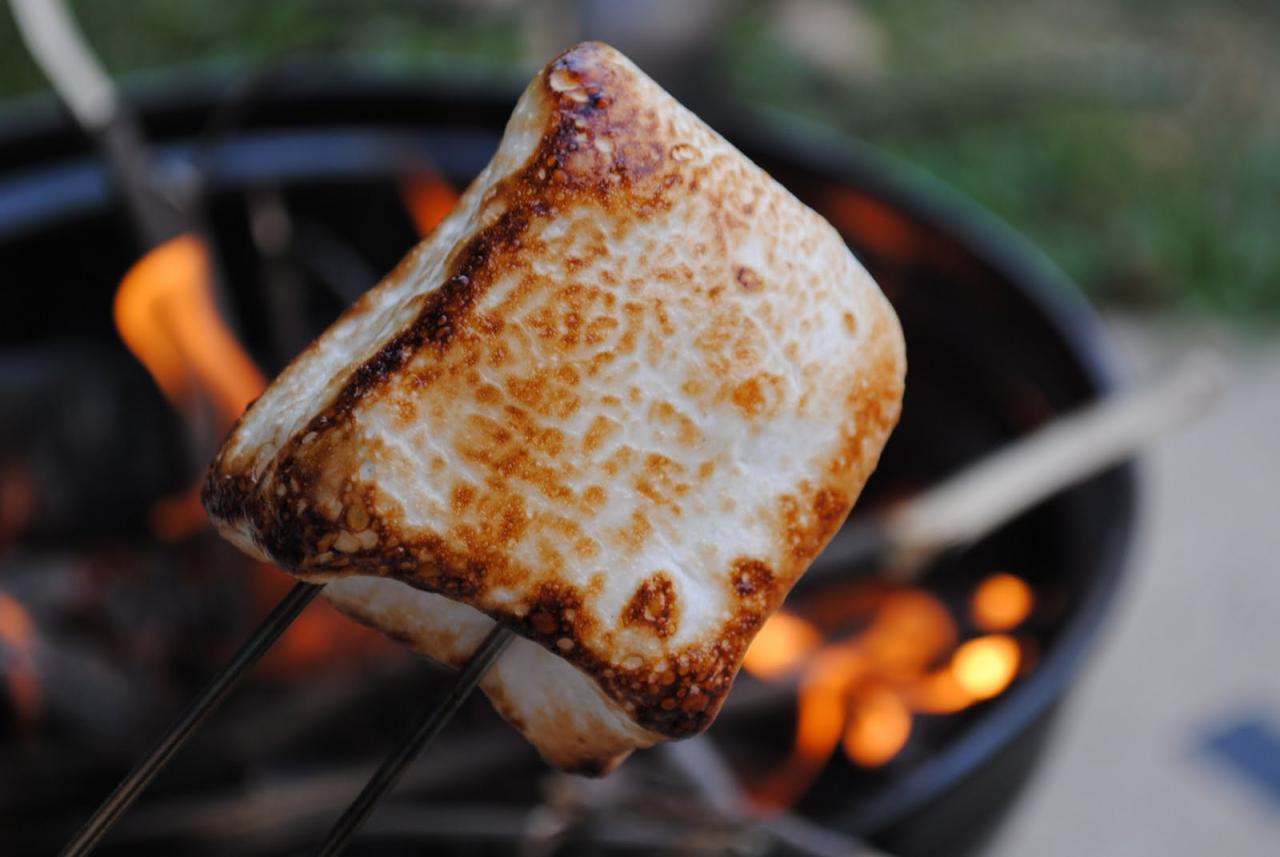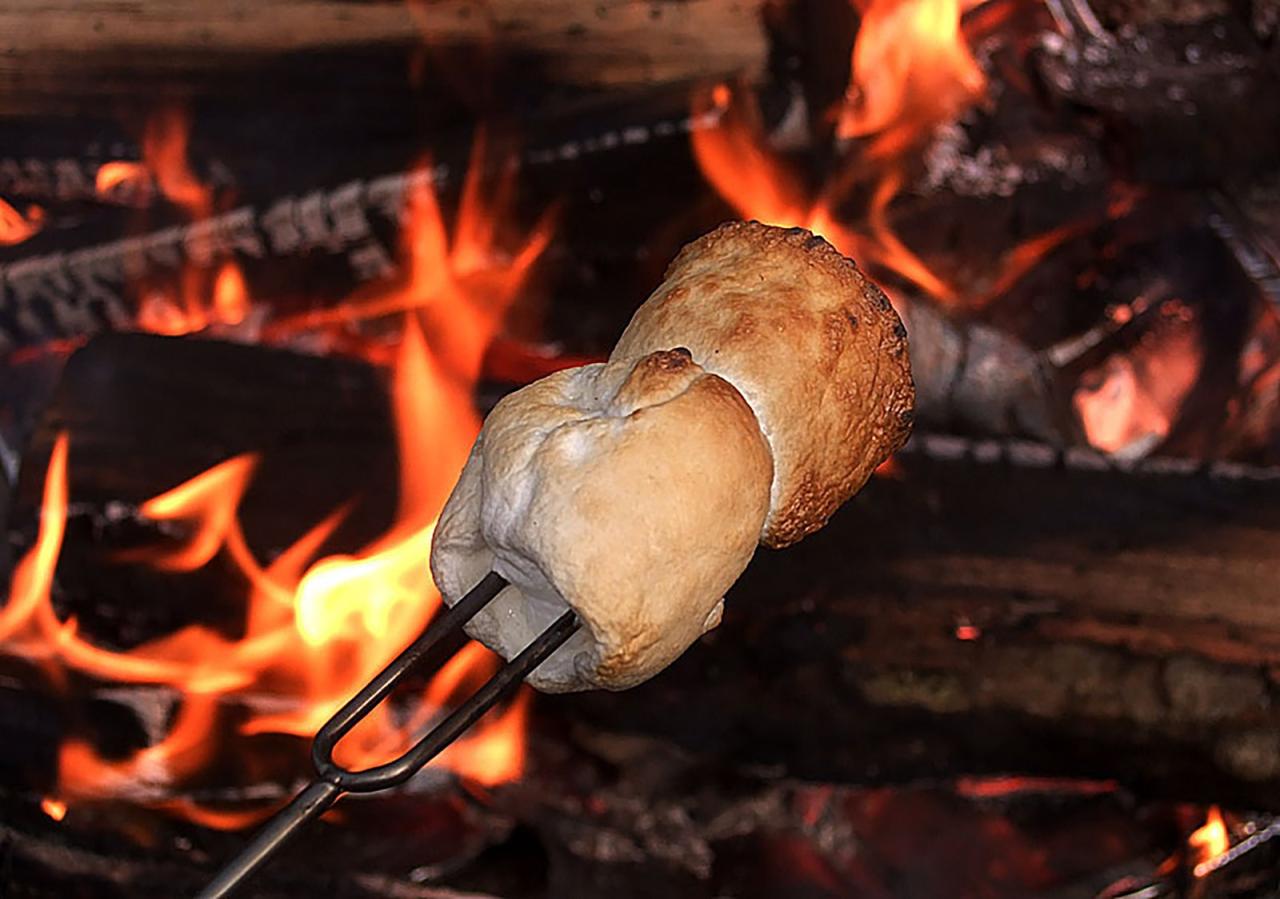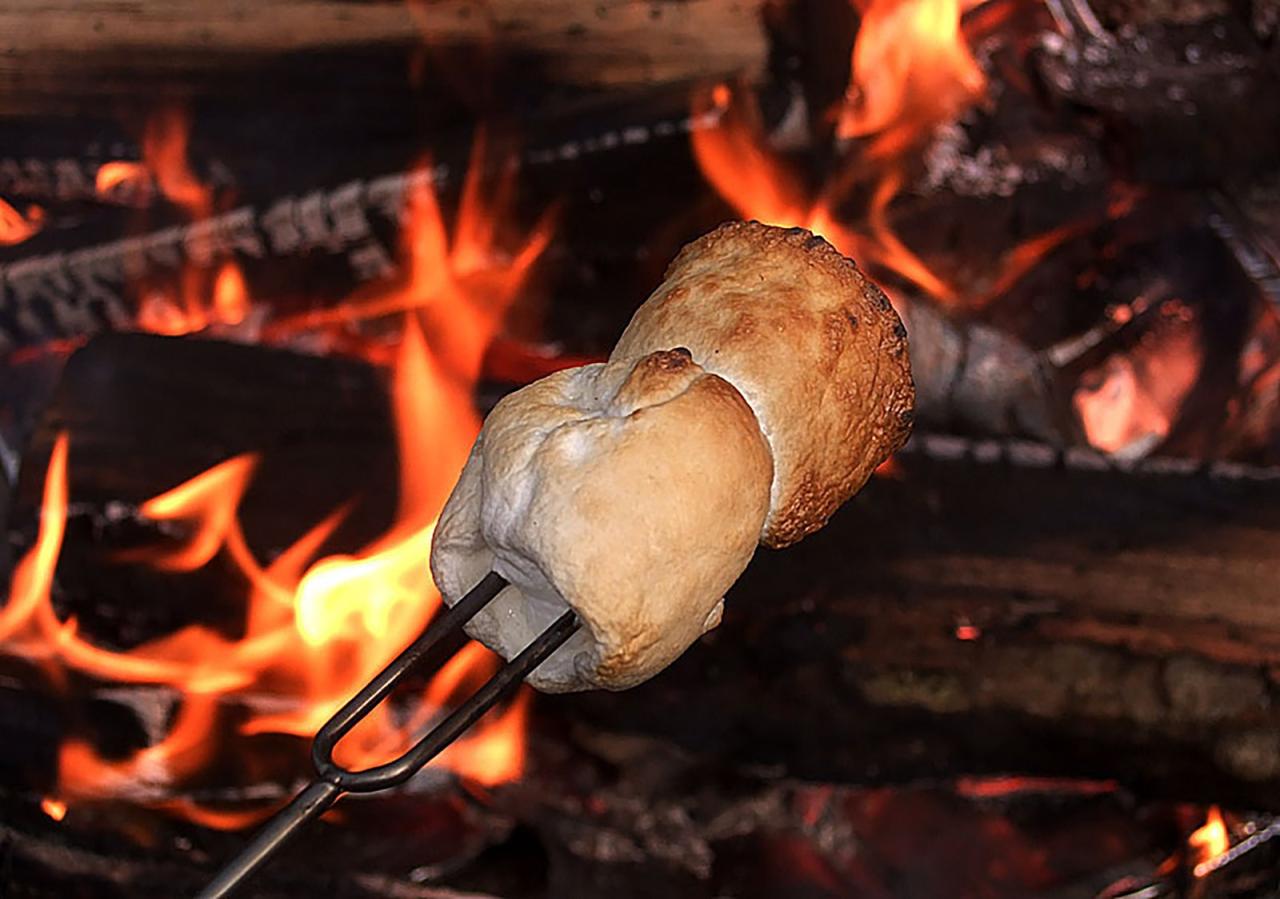The texture of a roasted marshmallow sets the stage for this enthralling narrative, offering readers a glimpse into a story that is rich in detail and brimming with originality from the outset. Embark on a culinary journey where we explore the crispy exterior, the gooey interior, and the factors that influence this beloved treat’s unique characteristics.
From the impact of roasting time to the role of moisture content, we delve into the science behind the marshmallow’s texture. We’ll also uncover its culinary applications, examining how its distinct qualities enhance various dishes and the challenges chefs face in maintaining its desired texture.
Sensory Description of Texture

The texture of a roasted marshmallow is a unique and complex combination of crispy, gooey, and airy. The exterior of the marshmallow is typically crispy and browned, with a slightly charred flavor. This crispy exterior gives way to a gooey and chewy interior that is soft and yielding.
The interior of the marshmallow is also aerated, with small pockets of air that give it a light and fluffy texture.
Comparative Analysis
The texture of a roasted marshmallow is similar to that of other roasted foods, such as s’mores and campfire bread. However, the marshmallow has a unique combination of crispy, gooey, and airy textures that sets it apart from other roasted foods.
The crispy exterior of the marshmallow provides a satisfying crunch, while the gooey interior provides a soft and chewy contrast. The airy interior of the marshmallow also makes it light and fluffy, which makes it a popular choice for desserts.
Factors Influencing Texture
The texture of a roasted marshmallow is influenced by several factors, including roasting time, size and shape, and moisture content.
Roasting Time
Roasting time plays a crucial role in determining the texture of a marshmallow. A shorter roasting time results in a marshmallow with a chewy, gooey center and a slightly crispy exterior. As roasting time increases, the marshmallow becomes progressively more firm and browned, developing a more pronounced crispy exterior and a less chewy interior.
Size and Shape
The size and shape of a marshmallow also affect its texture. Smaller marshmallows tend to roast more evenly and develop a more uniform texture throughout. Larger marshmallows, on the other hand, may have a more pronounced gradient in texture, with a crispy exterior and a gooey center.
Moisture Content
Moisture content is another important factor that influences the texture of a roasted marshmallow. Marshmallows with a higher moisture content tend to be softer and gooier, while those with a lower moisture content are firmer and crispier. The roasting process drives off moisture, resulting in a decrease in moisture content and a corresponding increase in firmness.
Culinary Applications and Considerations

The unique texture of marshmallows makes them a versatile culinary ingredient. Their airy and fluffy interior provides a delightful contrast to other ingredients, while their slightly crispy exterior adds a touch of crunch.
Marshmallows are commonly used in desserts, such as s’mores, where they are toasted over a campfire and sandwiched between graham crackers and chocolate. They can also be added to hot chocolate or coffee for a sweet and fluffy treat.
Marshmallows in Baking
In baking, marshmallows can be used to add sweetness, texture, and moisture. They can be folded into cookie dough, brownie batter, or cake batter to create a gooey and chewy treat. Marshmallows can also be used as a topping for pies, cobblers, and other desserts.
Marshmallows in Savory Dishes
While marshmallows are most commonly associated with sweet dishes, they can also be used in savory applications. For example, marshmallows can be added to stuffing or meatloaf to create a moist and flavorful dish. They can also be used as a glaze for chicken or fish.
Challenges in Maintaining Marshmallow Texture, Texture of a roasted marshmallow
Maintaining the desired marshmallow texture in various culinary applications can be challenging. Overheating marshmallows can cause them to melt and lose their fluffy texture. Conversely, underheating marshmallows can result in a chewy and dense texture.
To prevent marshmallows from melting, it is important to heat them gently and avoid overcooking. For example, when toasting marshmallows over a campfire, it is best to hold them far from the flames and rotate them frequently. When adding marshmallows to baked goods, it is important to fold them in gently to avoid deflating them.
Last Word: Texture Of A Roasted Marshmallow
In conclusion, the texture of a roasted marshmallow is a symphony of sensory experiences that tantalizes the taste buds and sparks culinary creativity. Its crispy exterior, gooey interior, and the factors that influence its unique characteristics make it a beloved treat that continues to captivate and inspire.
FAQ Guide
What factors influence the texture of a roasted marshmallow?
The roasting time, size and shape of the marshmallow, and its moisture content all play a role in determining its texture.
How does the marshmallow’s texture affect its culinary applications?
The marshmallow’s texture can enhance or complement other ingredients, making it a versatile ingredient in various dishes.
What are the challenges of maintaining the desired marshmallow texture in culinary applications?
Controlling the roasting time and moisture content is crucial for achieving the desired texture, which can be challenging in certain culinary techniques.

